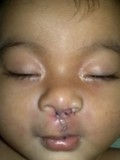Specialist in Orthognatic Surgery
(Dento Facial Corrective Surgery)
Eutrapio S. Guevara Jr., MD, FPCS
Prognathism (Babalu), Micrognathism (Atras ang Baba)
… trust your face to a facial plastic surgeon with extensive experience in maxillofacial surgery, facial cosmetic, plastic-reconstructive surgery

What is Orthognathic Surgery?
Orthognathic surgery is what an oral, maxillofacial or craniofacial surgeon does to reposition one or both jaws in the correction of a wide range of minor or major facial and jaw irregularities. In fact, moving the jaws also moves the teeth. Orthognathic surgery is usually done in conjunction with orthodontic treatment, so that the teeth are in proper position after surgery. In many cases, an enhanced facial appearance and a well balanced facial profile and symmetry can also result.
Who needs Orthognathic Surgery?
Today, through modern technology, a variety of producers are available to correct facial deformities. Among these facial deformities are Prognathism (prominent lower third of the face or mandibular excess) and micrognathism (retruded jaw) with associated malocclusion. A prognathic jaw occurs when the lower jaw is overdeveloped and protrudes out beyond the upper jaw. Majority of these patients have malocclusion meaning that their teeth are not properly aligned and that the bones of the upper and lower jaws are in excess of deficient to produce and aesthetic profile. In the Philippines, treatment and surgery for these kinds of deformities are still not so popular, that is why a lot of Filipinos in all walks of life can be seen hanging around with such facial disfigurement. They are what we commonly describe now as “Babalu” or “Walang Jaw”. Some would use their facial appearance in show business.
The following are some of the conditions that may indicate a need for orthognathic surgery:
-
Open bite (space between upper and lower front or back teeth when mouth is closed)
-
Unbalanced facial appearance (facial asymmetry)
-
Unequal growth of the jaws, injury or birth defects
-
Receding chin (Micrognathism)
-
Protruding chin (Prognathism- “babalu”)
-
Facial injury- old or mismanaged jaw fractures
-
Midfacial retrusion after surgery of Cleft Palate/Lip
-
Sleep Apnea (breathing problems- heavy snoring and difficult breathing)
-
Difficult chewing or biting food
How is Orthognathic Surgery Done?
In the past, these were just treated by dental surgeons by pulling out all the teeth thinking that these can be controlled by prosthetic dentures. Most of them think that this can be treated by purely orthodontic treatment mobilizing only the teeth but not the jaws. Repair of a protruding or recessed jaw is a major surgical procedure. It is performed in the hospital, under general anesthesia, and it takes anywhere from 2-6 hours. Before surgical treatment is undertaken, various work-ups are done such as Cephalometric evaluations, Panoramic x-ray of the jaws, dental model cast and cutting and photography. The cooperation between the orthodontist and maxillofacial surgeon serves as basis for the general acceptance of combined orthodontics and surgical treatment of jaw problems as the treatment of choice. In some occasions, prior to actual surgery, orthodontic treatment (pre-surgical orthodontics) is first done to facilitate actual occlusion during surgery. After surgery, final orthodontic tooth movement is usually necessary to fine-tune your bite.
The latest surgical procedures now are done without incisions of the skin of the face to expose the jaw in making the bone cuts but everything inside the mouth. During the last decade, closure of the mouth takes at least 6-8 weeks and the patient is fed through the nasogastric tube inserted through the nose. With the latest technology of internal rigid fixation in maxillofacial surgery to stabilize segments of the jaw, closure of the mouth is only 5 days. Hospitalization is decreased to at least a week, the patient can eat through the mouth in a week time, and the possibility of relapse and complications has been avoided.

Medialization Genioplasty (narrowing)
Achieving a Feminine and Slim Lower Face


Before

Before

After


Narrowing genioplasty, either as a single procedure or in combination with mandible reduction, makes the lower face appear slender and produces a more feminine contour.
After
Mandibuloplasty
Reduction of Angle/Body by Osteotomy/Masseter
ANGLE AND BODY REDUCTION: BETTER IMPROVEMENT










After
Before
Before
After
Correction of Prognathism with Le Fort 1 and Mandibular Reduction


Before





After





Long Face Syndrome
Gummy Smile (Horse Face)
Maxillary Hyperplasia


Secondary Correction of Cleft Lip-Nose with Orthognathic Surgery

Asymmetric Jaw: Orthomorphic Surgery alone

Before

After


Asymmetric Jaw with Prognathism:
Combined Orthognatic and Orthmorphic Surgery

Before

After



Before

After
Mandibular Asymmetry Correction:
• Ramus Osteotomy, Right
• Saggital Split Osteotomy, Left: Short Ramus
• Transverse Sliding Osteotomy: Chin
• Lateral Augmentation with Medpore (chin implant) after Mandibular rotation to the right with Osteotomy Chin Rotation to the right
After
Before
3D Printed Polycaprolactone




Mentoplasty (Chin Augmentation) - Sliding Osteotomy … Without Malocclusion



Before


After
Mandibuloplasty
Augmentation- Angle of the Jaw using 3D Printed
Polycaprolactone/Tricalcium phosphate instead of Iliac bone graft





Bone Graft (Iliac)
Coronal Incision Approach
Malar Augmentation




Forehead (Frontal) Bone Contouring and Brow Lift via Coronal Incision,
1992, Cesar Ramirez, MD

Mandibuloplasty- Slender Lower Face
Reduction of Angle/Body by Ostectomy/Masseter
Techniques




Mandibuloplasty
Reduction of Angle/Body by Osteotomy/Masseter
X-RAY STUDIES




Mandibuloplasty- Slender Lower Face
Reduction of Angle/Body by Osteotomy/Masseter Trimming


Mandibuloplasty
Reduction of Angle/Body by Osteotomy/Masseter

Removal of first maxillary premolar
Removal of first mandibular premolar

Before



After



Before



After



Bimaxillary Protrusion: Orthognathic Surgery
with Mandibuloplasty (Ostectomy)



Osctectomy Site
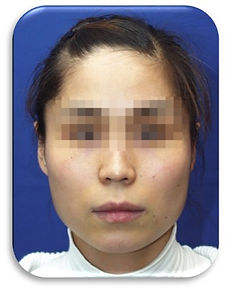



Before
After
Malar Reduction: Osteotomy - Shaving

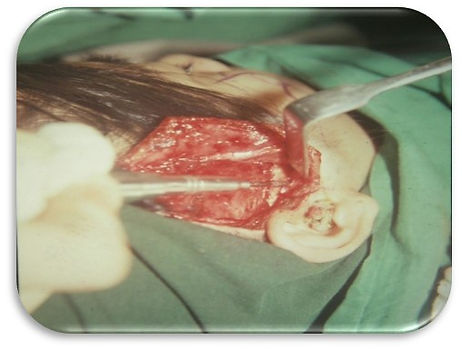

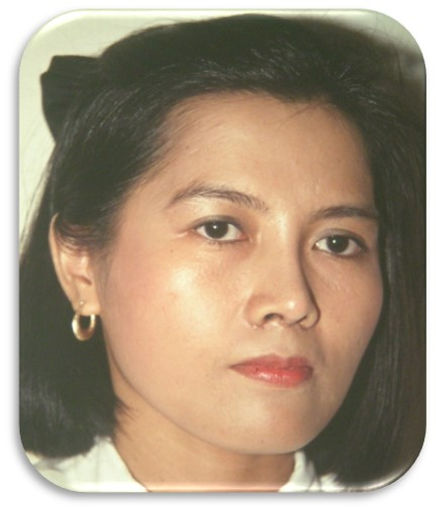
Before
After



Before

After
Malar Augmentation Using 3D Printed PCL (Polycaprolactone)
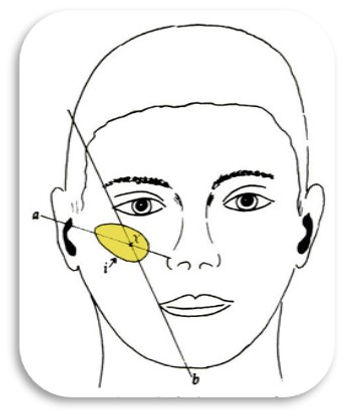
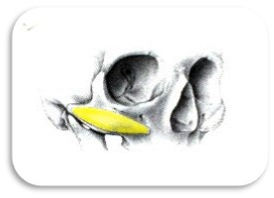

Before

After

Malar: Midfacial Rejuvenation
Malar Fat Pad Suspension - Malar accentuation/enhancement with
3D Printed Polycaprolactone (PCL)




1. Revision Augmentation Rhinoplasty (Silicon removed)
- combination GoreTex and PCL sheet
2. Revision Malar Augmentation (Silicon removed)
- Midfacial Rejuvenation using Polycaprolactone (PCL)
Proper Technique for Transcolumellar Incision




Discussion: The Downsides of Open Rinoplasty
The Disadvantages of the Open Approach:
-
Transcolumellar scar and columellar flap skin loss
-
Correctly placing a staggered incision across the columella just anterior to the flare of the feet of the medial crura
-
Leave the continuity of the medial crurae intact
-
Undermining 5mm below the inferior segment of the incision for proper leveling of wound closure
-
Meticulous suturing

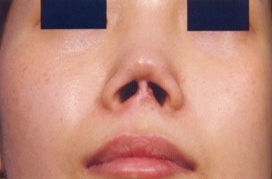



Securing and suturing a multitier (multilevel) shield graft with backstop graft




Adapted from: Prof. Yong Ju Jang, MD, PhD., Seoul, Korea
Augmentation Rhinoplasty
Combination of GoreTex (e-PTFE) or Silicon Implant, with Cartilage Graft for Tip Plasty






Before
After
After
After effect of Nasal Base Reduction




Mentoplasty (Chin Augmentation) - Implant (Medpore) … Without Malocclusion
Before
After


With Nose Lift
Submentoplasty
Liposuction and GoreTex for Neck Rejuvenation with Chin Augmentation
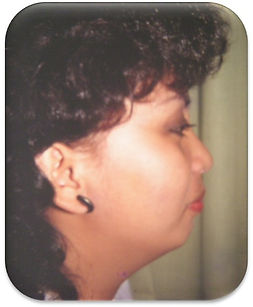

Before
After
Mandibuloplasty
Reduction of Angle/Body by Osteotomy/Masseter



Before
After
Mandibular Split Ostectomy
Medialization Genioplasty (narrowing)
Achieving a Feminine and Slim Lower Face



Medialization Genioplasty (narrowing)
Achieving a Feminine and Slim Lower Face


Before

After

Bimaxillary Protrusion
B




Surgical Technique
A
Diagnostic Work-ups: Orthomorphic and Orthognathic Surgery
A.

B. Cephalometric Radiography with or without tracings (Computerized)
C. 3D CBCT & 3D Printing Model
D. 3D Digital Computer Graphics Simulation Surgery (by navigation)
E. CT-Scan and 3D Reconstruction Imaging (CBCT)
F.Pre-fabricated model Cast of the dental occlusion with Articulator (3D Printed-Virtual Surgical Planning)
G. Steriolithography model cast of the Facial skeletal Structures (3D Printed-Virtual Surgical Planning)
H. Photography (Pre and post) documentation
I. Physiological counseling
Panoramic Radiologic Study

Prognathism- Class III Malocclusion
Mandibular Excess with Midfacial Retrusion
Before


After


Asymmetric Jaw for Orthognathic Surgery or Orthomorphic Surgery or Combination?
Orthognathic surgeries alone, however, often are unable to resolve contour defects arising from asymmetric growth disparity.
The changing perceptions of facial beauty and the emergence of utilitarian oncepts of attractiveness endows a particular urgency for the orthognathic surgeons’ repertoire to include orthomorphic corrections.
- Paul Salins, MDB, JOMS, 2008


Orthomorphic Surgery alone

Before

After


Combined Orthognathic and Orthomorphic Surgery

Before

After



Before

After
Long Face Syndrome
Gummy Smile (Horse Face)
Maxillary Hyperplasia

A

B

C

D

Before

After







Pre and Post-surgical
Orthodontic Tx (complete)
Bimaxillary Protrusion… with Malocclusion
ORTHOGNATIC SURGERY

Before

After


